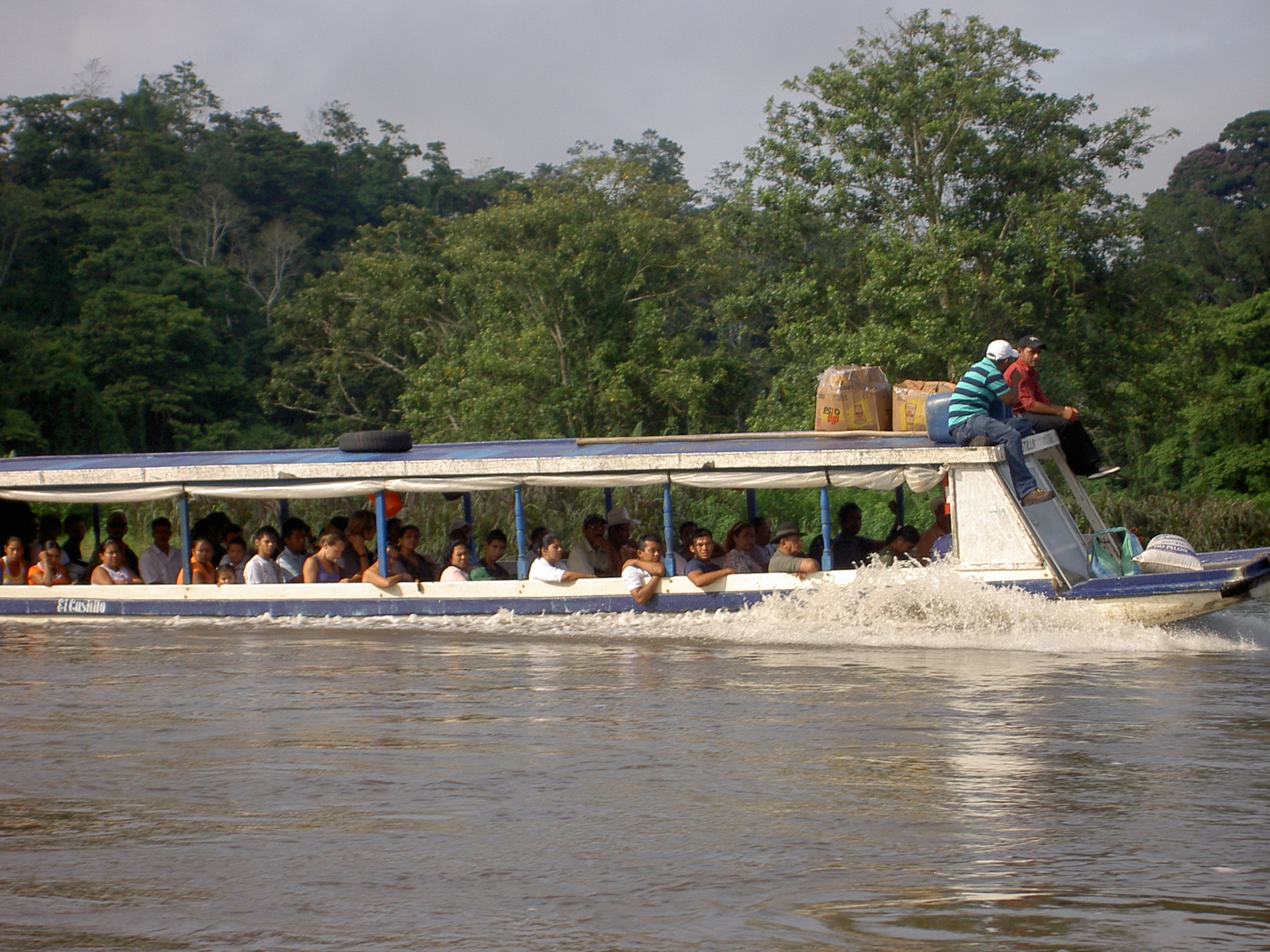Transportation was interesting in Nicaragua.
All my friends who have taken this Nicaragua missionary trip in the past warned about one thing after the bugs and heat: “You’re not going to believe that plane flight into San Carlos.”
Hey, we’re going to the jungle. What kind of transporation options do you expect?
How about a 12-seater plane delayed by a violent thunderstorm in Managua and then using a runway not quite as long as it should be when you have too much luggage?
Exciting, yes, but at least this year the San Carlos runway is paved.
We arrived in a window of non-rain, lluvia, and then caught taxis to the San Carlos dock where we boarded a boat to head down the river.
In a land with few roads, boats become the easiest and most affordable way to travel. Water taxis ply the river hourly, along with barges and fishing boats.
Rio San Juan flows at about 10 knots an hour, seamlessly traveling through green countryside. Birds take flight, the sky curdles with colorful clouds as the sun sets, and the rhythmic ride lulls tired workers into calm. The boat commute was the best part of the trip.
 Without many roads, horses are still viable transport and we saw them both down the river and along the roads of western Nicaragua. Many of the men who came to our eyeglasses clinic wore cowboy hats and usually rubber boots, good for walking in the boggy ground along the river and to work the fields.
Without many roads, horses are still viable transport and we saw them both down the river and along the roads of western Nicaragua. Many of the men who came to our eyeglasses clinic wore cowboy hats and usually rubber boots, good for walking in the boggy ground along the river and to work the fields.  Horses pulled tourists in Granada and drew wagons for farmers along the PanAmerican highway between Managua and San Juan del Sur. Many horses cropped the sides of the road as four-footed lawn mowers.
Horses pulled tourists in Granada and drew wagons for farmers along the PanAmerican highway between Managua and San Juan del Sur. Many horses cropped the sides of the road as four-footed lawn mowers.
Manpower, too, served its purpose in pedicabs.
In San Carlos, we saw a vividly decorated bus, undoubtedly hoping for the best on the busy roads. The Peace Corp volunteers told us you rode with food and often live chickens as fellow passengers.
Most people walked in their flip flops, boots or bare feet. Where there was a will, there was a way.









Thoughts? Reactions? Lurker?